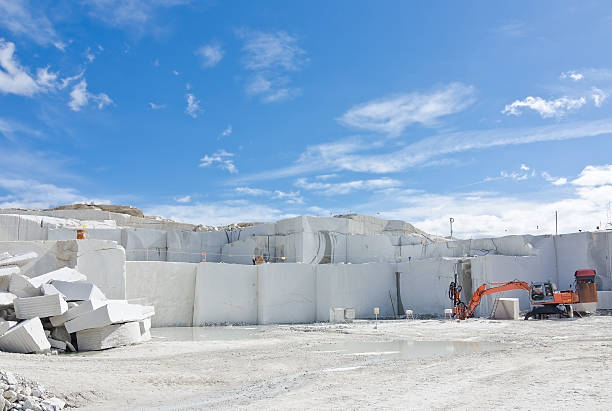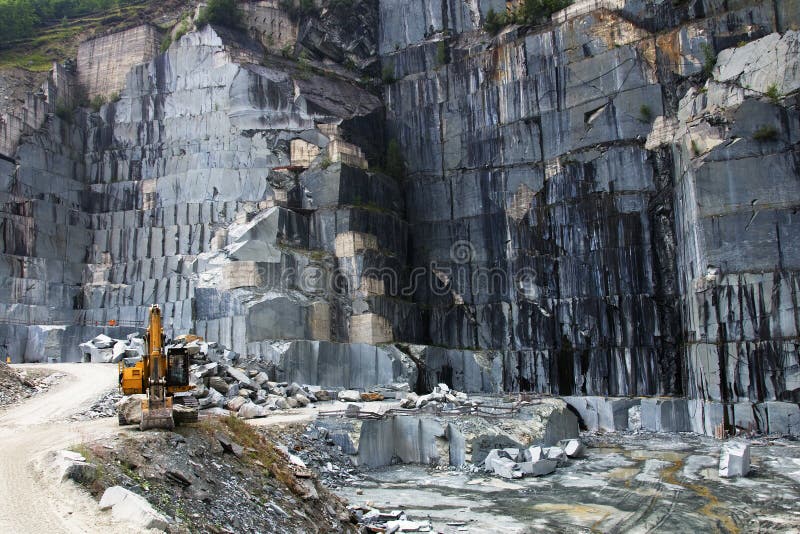Unveiling the Mysteries of Granite Quarrying: Where Toughness and Sophistication Meet
The globe of granite quarrying is a realm where the raw strength of nature merges with human virtuosity to create frameworks that stand the test of time with an air of sophistication. From the depths of quarries to the careful sprucing up in workshops, the procedure of transforming granite into building marvels is an intricate dancing of tradition and development. As we peer right into the depths of this ancient craft, we begin to uncover the hidden details that shape the very significance of our constructed atmosphere.
The Beginnings of Granite Quarrying
In the annals of architectural history, the origins of granite quarrying are shrouded in a tapestry of ancient workmanship and geological marvels. Going back to old Egypt and Mesopotamia, the extraction of granite from quarries noted the beginning of a journey that would at some point cause the creation of some of the globe's most legendary frameworks.
Granite quarrying's roots can be mapped to the knowledgeable artisans that recognized the rock's longevity and aesthetic appeal. With a mix of primitive tools and large determination, these early quarry employees discovered granite blocks that would become the structure blocks of human beings.
As people evolved, so did the strategies of quarrying granite. The Romans, renowned for their engineering expertise, developed sophisticated methods for drawing out granite to build monoliths, holy places, and roads that stood the test of time.
The legacy of these ancient quarrying practices remains to shape contemporary architecture, with granite remaining a sign of strength and style in construction jobs around the world. (granite quarries in south africa)
Devices of the Quarrying Profession
The development of granite quarrying strategies from ancient people to contemporary times highlights the vital duty played by the tools of the quarrying trade in forming the industry's methods. In ancient times, quarrying devices were basic, usually being composed of knives, hammers, and wedges made from materials like bronze or iron. These devices called for considerable workforce and time to extract granite obstructs from quarries.

In addition, the intro of pneumatic tools and high-powered equipment has actually significantly minimized the physical labor required in quarrying procedures, improving employee security and productivity. As the quarrying additional info market proceeds to innovate, the tools of the profession continue to be at the leading edge of driving progression and shaping the future of granite extraction.
Removing Blocks of Granite
Using precision equipment and advanced methods, the extraction of granite obstructs from quarries has actually become an innovative process in the contemporary quarrying industry. The initial step includes identifying the area and dimension of the granite down payment to establish the most effective removal method. Once an appropriate site is selected, the extraction process begins with the boring useful site of holes for the positioning of nitroglycerins. Regulated blasting methods are after that utilized to damage apart the granite right into workable sections.

Polishing and Completing Methods
To achieve a perfect surface area on granite blocks, competent artisans use a series of careful sprucing up and completing methods. After the first removal and shaping processes, the granite obstructs undertake a detailed sprucing up phase to boost their all-natural beauty and resilience. One common technique made use of in polishing granite is diamond abrasion, where commercial rubies are used to grind and brighten the rock to a smooth coating. This procedure not only produces a glossy surface yet likewise makes certain uniformity in shade and texture throughout the granite block.
In enhancement to sprucing up, completing methods are related to more refine the granite's appearance. These strategies may include flaming, developing, or brushing, each offering special structures and coatings to suit various visual preferences. Flaming, for example, includes exposing the granite surface area to heats to create i thought about this a harsh, distinctive finish, perfect for exterior applications where slip-resistance is crucial. Refining, on the other hand, provides a matte coating that is smooth to the touch, best for indoor counter tops and flooring. By thoroughly choosing and using these polishing and ending up methods, craftsmens can change raw granite obstructs right into elegant items that showcase both toughness and beauty.

Environmental Impact and Sustainability
With the growing emphasis on ecological consciousness in the sector, granite quarrying methods are progressively scrutinized for their impact on natural resources and lasting sustainability. Furthermore, the transport of granite from quarries to processing facilities generates carbon emissions, additionally contributing to ecological destruction.
To minimize these impacts and ensure sustainability in granite quarrying, industry stakeholders are taking on different actions. Carrying out sophisticated innovations to minimize energy consumption and water use, redeeming quarried land for environmental reconstruction, and advertising liable sourcing methods are some techniques being utilized. Certifications such as the Forest Stewardship Council (FSC) and the Management in Energy and Environmental Style (LEED) help customers determine eco friendly granite items.
Conclusion
Finally, granite quarrying is a procedure that needs specialized tools and methods to remove blocks of granite and brighten them to a high level of surface. While the ecological effect of quarrying can be significant, efforts are being made to enhance sustainability techniques in the industry. Overall, granite quarrying is a delicate balance between using the strength and sophistication of this natural rock while reducing its effect on the setting.
Comments on “Discovering Granite Quarries in South Africa Industry: From Quarry to Work of art”